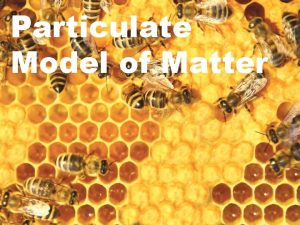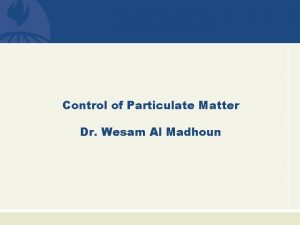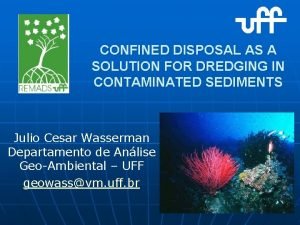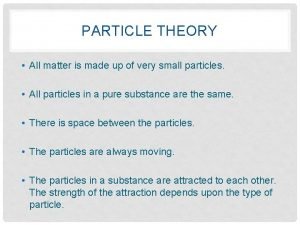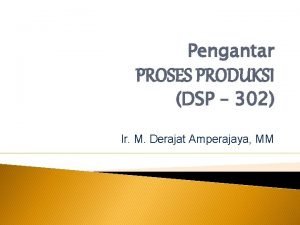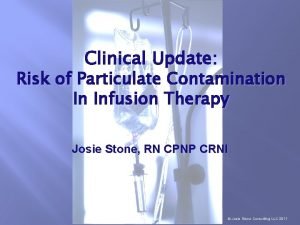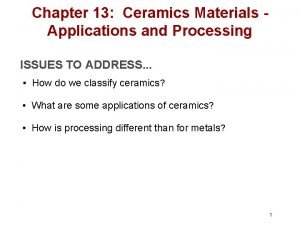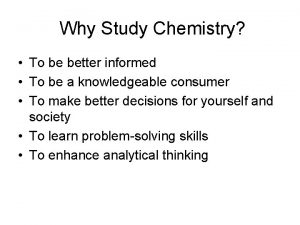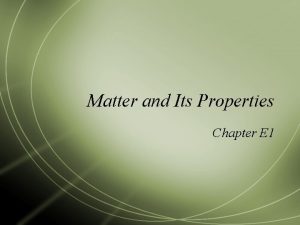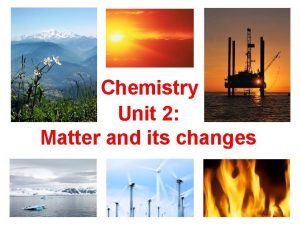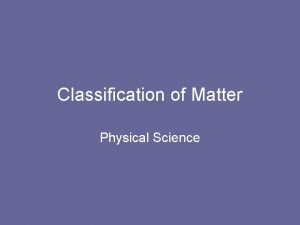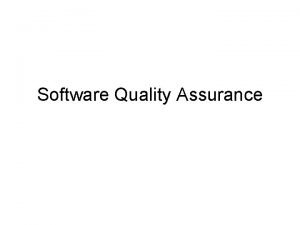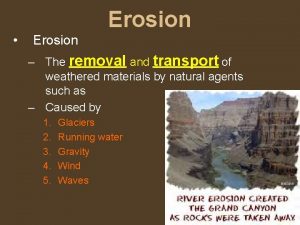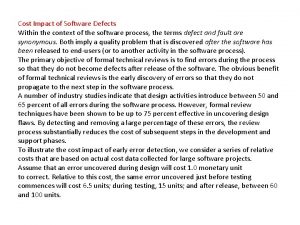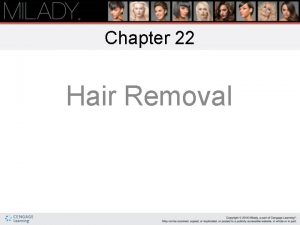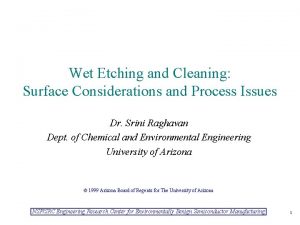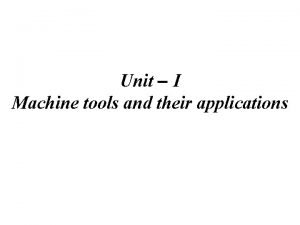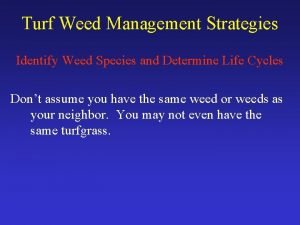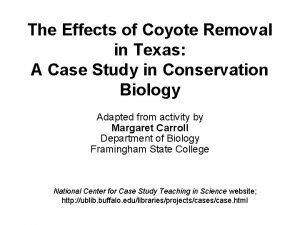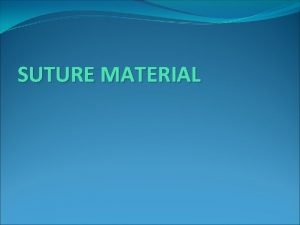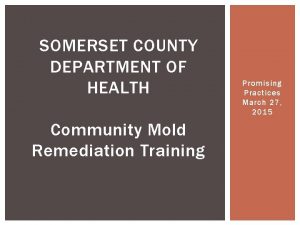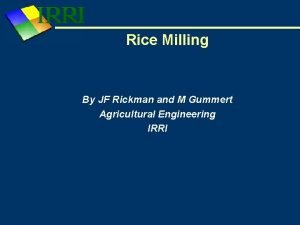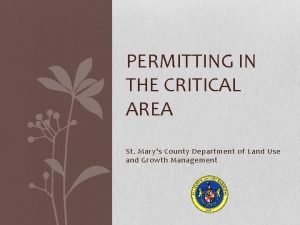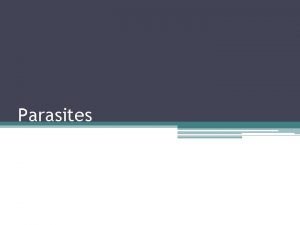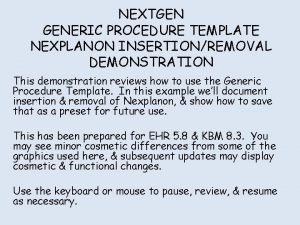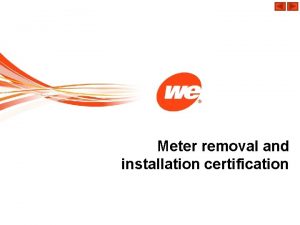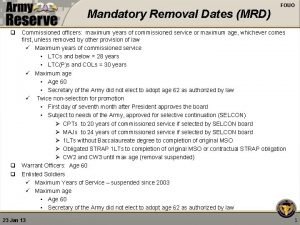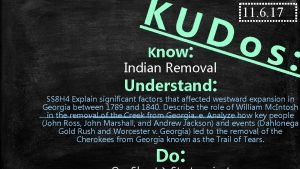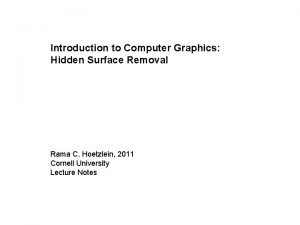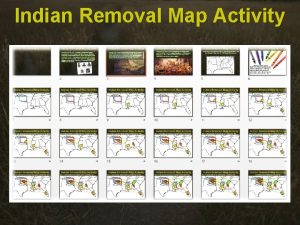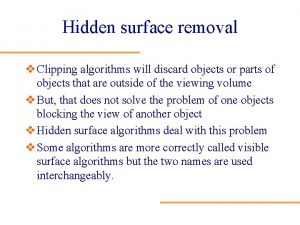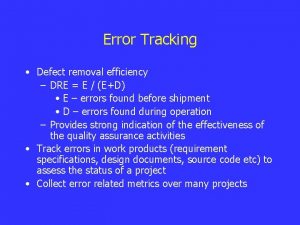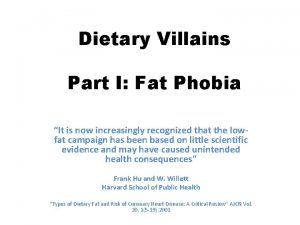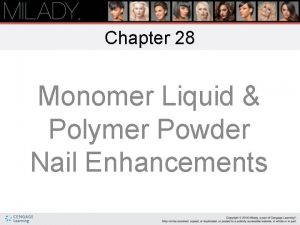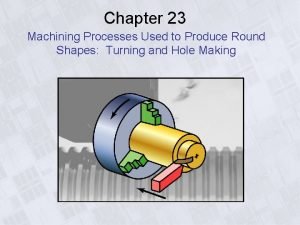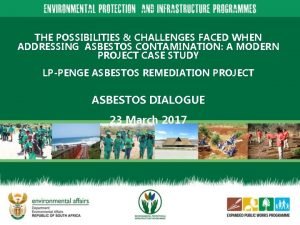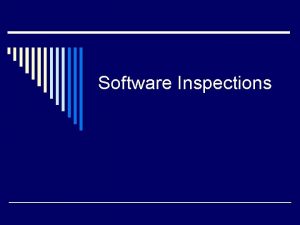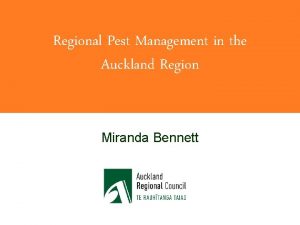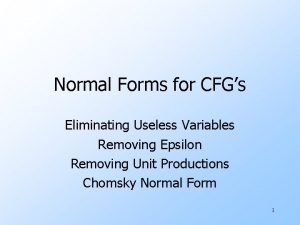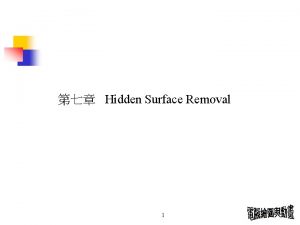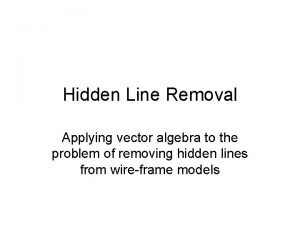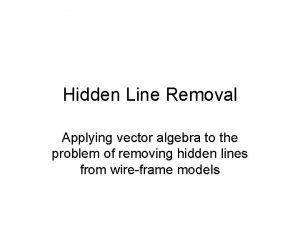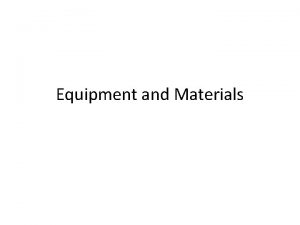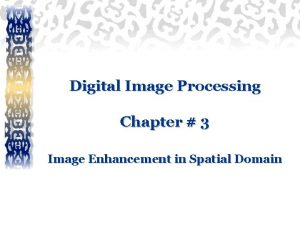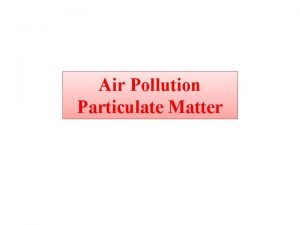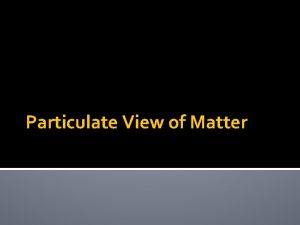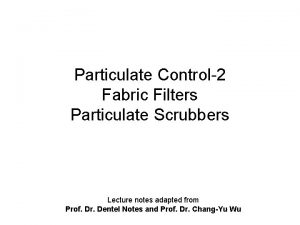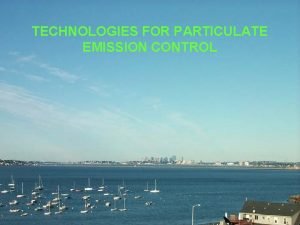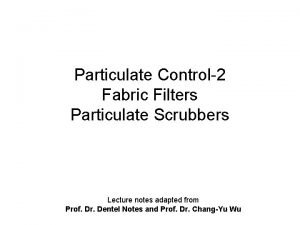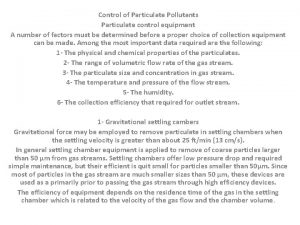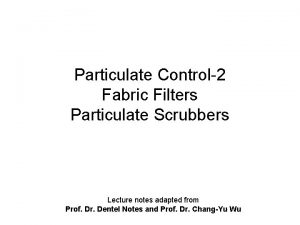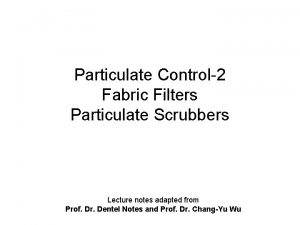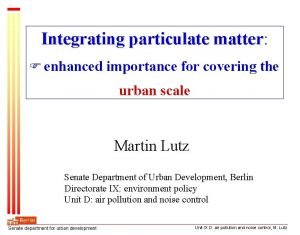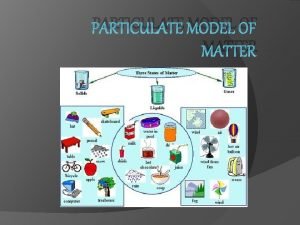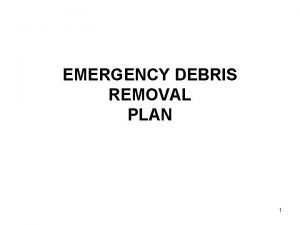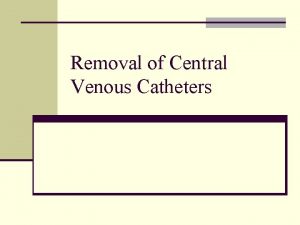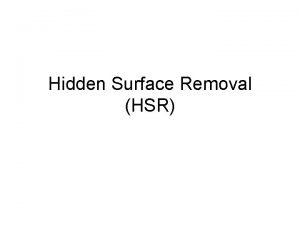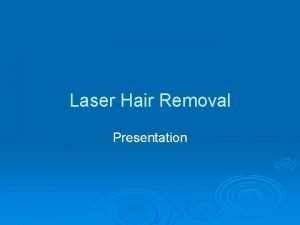Particulate Matter and its Removal 11272020 Particulate Matter









































































- Slides: 73

Particulate Matter and its Removal 11/27/2020

Particulate Matter – Overview • Can be solid or liquid particles • Usually defined in terms of PM 10 and PM 2. 5 where the subscript refers to the diameter of the particle in microns 10 or 2. 5 • Reduces visibility in the atmosphere • Causes health problems related to the respiratory system and circulatory system

Relative sizes of particles in air

Relative sizes of particles in air PM 10 PM 2. 5

Particulate Matter Standards • High-volume samplers measured PM by Total Suspended Particulate Matter (TSP). TSP usually less than 25 -50 μg/m 3. Concentrations measured usually around 260 μg/m 3. • Based on research in the 1960 s and 1970 s, the human respiratory system was found to be affected by PM that was finer than what highvolume samplers measured. • A new standard based on PM 10 was established using a 24 -hour concentration of 150 μg/m 3.

Particulate Matter Standards – EPA in 1997 as amended 2006 The EPA set a new stricter standard that regulated fine particulate matter (PM 2. 5) in 1997: 65 μg/m 3 measured over a 24 -hour period and 15 μg/m 3 averaged over a year. The EPA announced in 2006 that it revised the level of the 24 -hour PM-2. 5 standard to 35 micrograms per cubic meter (µg/m 3) and retained the level of the annual PM-2. 5 standard at 15 µg/m 3. The EPA announced the designations for nonattainment for the PM-2. 5 2006 Standard, October 8, 2009. The current number of areas that violate the PM-2. 5 2006 Standard is 31 and the number of

Non-attainment areas: PM 2. 5 Yesterday http: //www. airnow. gov/

Key to air quality levels Air Quality Index Levels of Health Concern Numerical Value Good 0 to 50 Moderate 51 to 100 Unhealthy for 101 to 150 Sensitive Groups Unhealthy 151 to 200 Very Unhealthy 201 to 300 Hazardous 301 to 500 Meaning Air quality is considered satisfactory, and air pollution poses little or no risk Air quality is acceptable; however, for some pollutants there may be a moderate health concern for a very small number of people who are unusually sensitive to air pollution. Members of sensitive groups may experience health effects. The general public is not likely to be affected. Everyone may begin to experience health effects; members of sensitive groups may experience more serious health effects. Health alert: everyone may experience more serious health effects Health warnings of emergency conditions. The entire population is more likely to be affected.

Non-attainment areas: PM 2. 5 Today

Polk County Health Department – Polk County Air Quality Takes PM readings every 24 hours Weighted annual mean PM 2. 5 = 10 μg/m 3 (http: //www. city-data. com/city/Des-Moines-Iowa. html) Link: http: //www. airnow. gov/index. cfm? action=airnow. showmap&pollutant=PM 2. 5

PM 2. 5 in Iowa yesterday

PM 2. 5 in Iowa last year

Sources of PM • motor vehicles • wood burning stoves and fireplaces • dust from construction, landfills, and agriculture, mining • wildfires and brush/waste burning • industrial sources • windblown dust from open lands

Health Effects • Aggravates conditions such as asthma, bronchitis, emphysema • Can trigger asthma attacks • Makes it difficult to breathe • Can cause premature death in elderly people or people with heart disease and respiratory diseases • Can cause future health problems in children (such as asthma, increased

Effects on Visibility • Most haze is not natural, it is caused by air pollution • Air pollution, especially particulate matter, scatters and absorbs light • Sulfates particles are very effective in scattering light, especially in humid conditions

Denver, CO, (top) and Great Smokey Mountains National Park (bottom) in good visibility and bad visibility

Cleaning up Particulate Matter – Control Equipment • Gravity and Inertial Separators • Mechanical Collectors (Cyclones) • Scrubbers • Electrostatic Precipitators • Fabric Filters

Type 1:


Archimedes’s Principle Examination of the nature of buoyancy shows that the buoyant force on a volume of water and a submerged object of the same volume is the same. Since it exactly supports the volume of water, it follows that the buoyant force on any submerged object is equal to the weight of the water displaced. This is the essence of Archimedes principle.

Analysis of Forces Acting On a Settling Determining Particle the terminal settling velocity of a particle

Expressing the terminal settling Terminal Velocity of a Particle velocity of a particle An expression for Vs from the submerged weight of the particle, W, and the fluid drag force, D The drag force on a particle is given by D = CD g Ap Vt 2/2 W = ( - g)g s The suspended weight of the particle can be expressed as Since D = W, the above, after substituting Ap and p for particle diameter d ________ Vt = / 4 ( - g) gd 3 l CD

Stokes’s Law Re < 1, CD = 24 /Re Vs = g ( - g) d 2 18 Vs = g d 2 18

Pathways of particles around media particles

A B C










Type 2: Mechanical Collectors – Cyclones Specific types include: • Involute cyclone separator • Vane-axial centrifugal separator • Large-diameter cyclones • Small-diameter multi-cyclones

Mechanical Collectors – Cyclones Advantages: Good for larger PM Disadvantages: Poor efficiency for finer PM Difficult removing sticky or wet PM

Cyclones A Large. Diameter Involute Cyclone Separator

Involute Inlets

Cyclones - A small-diameter vaneaxial centrifugal separator


Type 3: Scrubbers Specific types include: • Venturis • Ejector • Impingement and Sieve • Mobile Bed Plates • Spray Towers • Catenary Grid • Mechanically Aided • Froth Tower • Condensation Growth • Oriented Fiber Pad • Packed Beds • Wetted Mist Eliminators

Scrubbers Advantages: Good efficiency, can collect (potentially explosive) gaseous pollutants as well as PM, small size Disadvantages: Requires a lot of water, generates waste stream





Venturi Scrubbers

Type 4: Electrostatic Precipitators Types include: • Dry, negatively charged • Wet-walled, negatively charged • Two-stage, positively charged

Electrostatic Precipitators Advantages: Good efficiency Disadvantages: Dependent upon resistivity of PM, cannot be used around explosive gases




Wet Electrostatic Precipitators

Electrostatic Plates List of suppliers of equipment http: //www. eco-web. com/cgi-local/sfc? a=index/index. html&b=index/category/4. 4. html



Type 5: Fabric Filters / Baghouses Types include: • Reverse air-type • Pulse jet

Fabric Filters / Baghouses Advantages: Good efficiency for various sizes of particles Disadvantages: Not to be used around corrosive substances, explosive gases, or sticky and wet particles










Technology - Media Cross Section View in cross-sectional direction View in "Z" direction with no cover sheet 50 x magnification • Three-dimensional placement and immobilization of functional particles • Maximization of accessibility to particles with tortuous void space • Low pressure drop • Combi media capability for particulate filtration

Growth of Fungi On Inside of Filter Material Here: Aspergillus sp.



Sources 1. EPA 2. American Lung Association 3. Polk County Health Department

Assignment: Particulates Do Problems at the end of Chapter 5 5 -3, 5 -5, 5 -23, 5 -53 Hand in by Thursday, February 10, 2010
 The particulate model of matter
The particulate model of matter Gravitational settling chamber
Gravitational settling chamber Confined space dredging
Confined space dredging Particle theory
Particle theory Particulate processing adalah
Particulate processing adalah Particulate contamination in infusions
Particulate contamination in infusions Particulate forming ceramics
Particulate forming ceramics Oer radiation
Oer radiation Is milk macroscopic microscopic or particulate
Is milk macroscopic microscopic or particulate Who was mendal
Who was mendal The emigree poem structure
The emigree poem structure Its halloween its halloween the moon is full and bright
Its halloween its halloween the moon is full and bright Matter and its properties
Matter and its properties Chemistry matter and its changes
Chemistry matter and its changes Properties of solid liquid and gas
Properties of solid liquid and gas Koosha golmohammadi
Koosha golmohammadi Median and lateral apertures
Median and lateral apertures Gray matter and white matter
Gray matter and white matter What is grey matter
What is grey matter When a train increases its velocity, its momentum
When a train increases its velocity, its momentum Windy snowy rainy sunny
Windy snowy rainy sunny If its square its a sonnet
If its square its a sonnet Its not easy but its worth it
Its not easy but its worth it Why isn't it a good idea to classify matter by its phases
Why isn't it a good idea to classify matter by its phases Matter is described by its
Matter is described by its Section 1 composition of matter
Section 1 composition of matter Classification of matter section 1 composition of matter
Classification of matter section 1 composition of matter Chapter 2 matter section 1 classifying matter answer key
Chapter 2 matter section 1 classifying matter answer key Section 1 composition of matter
Section 1 composition of matter Energy naturally flows from warmer matter to cooler matter
Energy naturally flows from warmer matter to cooler matter Defect amplification and removal
Defect amplification and removal The removal and transport of weathered materials from
The removal and transport of weathered materials from Cost impact of software defects
Cost impact of software defects Chapter 22 review questions milady
Chapter 22 review questions milady Library and book mould removal
Library and book mould removal Inked lorena pack
Inked lorena pack Particle removal wet etch filters
Particle removal wet etch filters Twist drill
Twist drill Sandspur removal kit
Sandspur removal kit The effects of coyote removal in texas
The effects of coyote removal in texas Suture size chart
Suture size chart Chapter 37 discipline chart
Chapter 37 discipline chart Mold remediation somerset county
Mold remediation somerset county Under runner disc huller
Under runner disc huller Lagoon phosphorus removal
Lagoon phosphorus removal St mary's county permits
St mary's county permits Cymothoa exigua removal
Cymothoa exigua removal Nexplanon removal template
Nexplanon removal template We energies meter removal
We energies meter removal Army officer mrd
Army officer mrd Indian removal act
Indian removal act Introduction to hidden surface removal
Introduction to hidden surface removal Indian removal map
Indian removal map Gyro tip post removal
Gyro tip post removal Hidden surface removal
Hidden surface removal How to calculate defect removal efficiency
How to calculate defect removal efficiency Fat villains
Fat villains Brain wrinkles
Brain wrinkles Suture removal time frame
Suture removal time frame Monomer
Monomer Material removal rate formula
Material removal rate formula Buccal fat removal dubai
Buccal fat removal dubai Asbestos removal edithvale
Asbestos removal edithvale Abandoned cable removal
Abandoned cable removal Elastiknn
Elastiknn Asbestos removal penge
Asbestos removal penge Defect removal efficiency
Defect removal efficiency Miranda pest control
Miranda pest control Eliminating useless symbols
Eliminating useless symbols Hidden surface removal
Hidden surface removal Hidden line removal
Hidden line removal Hidden line removal
Hidden line removal Dehorner: scoop or tube
Dehorner: scoop or tube Histogram equalization example
Histogram equalization example
